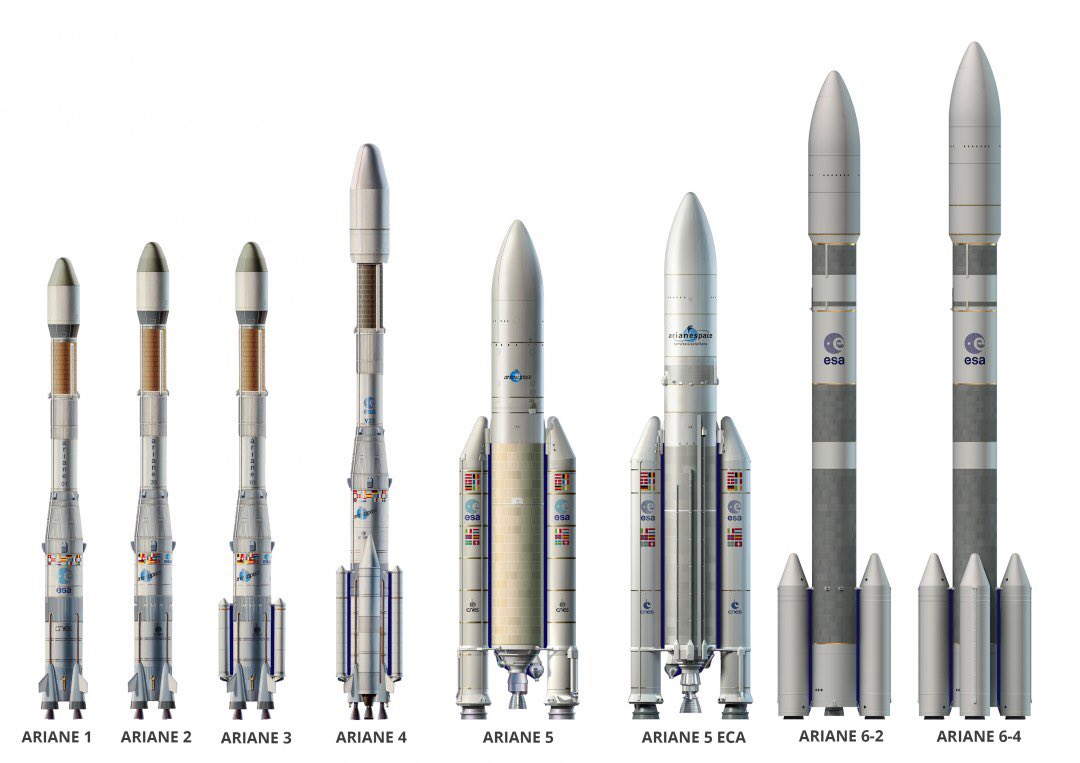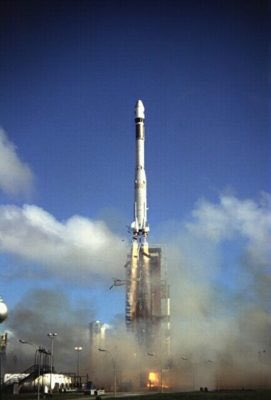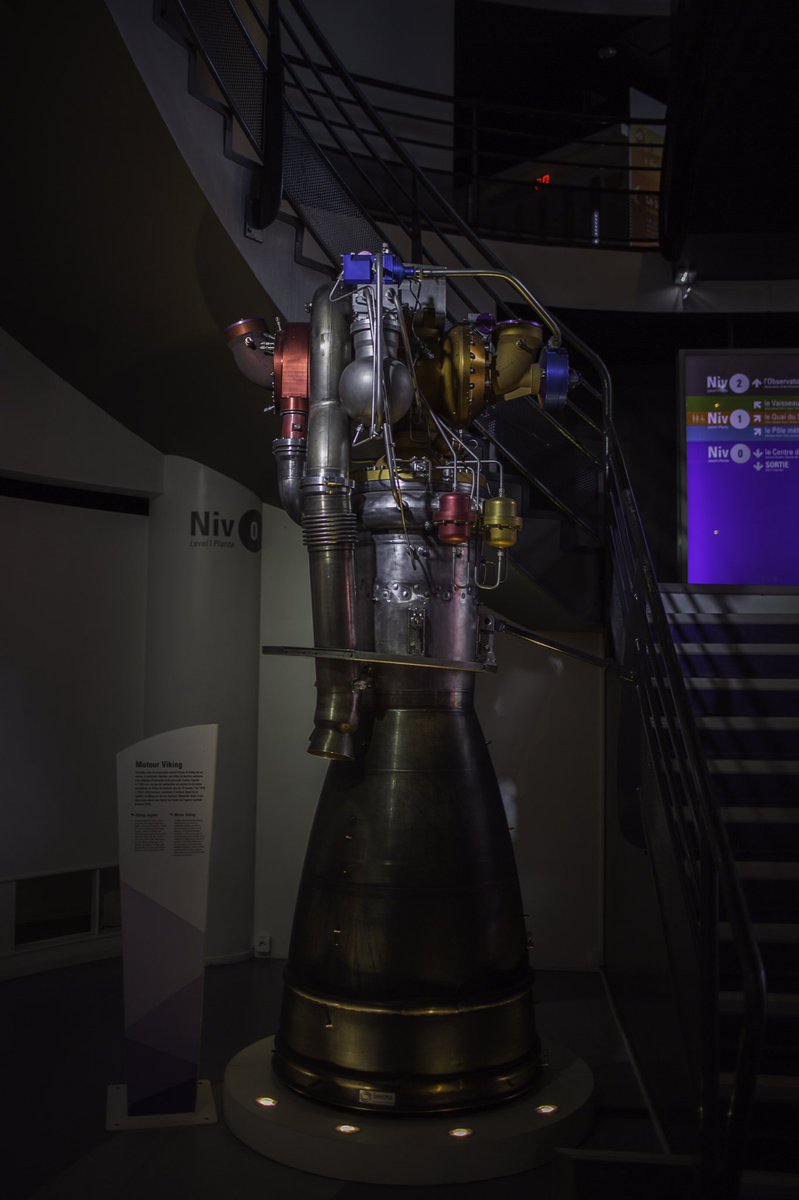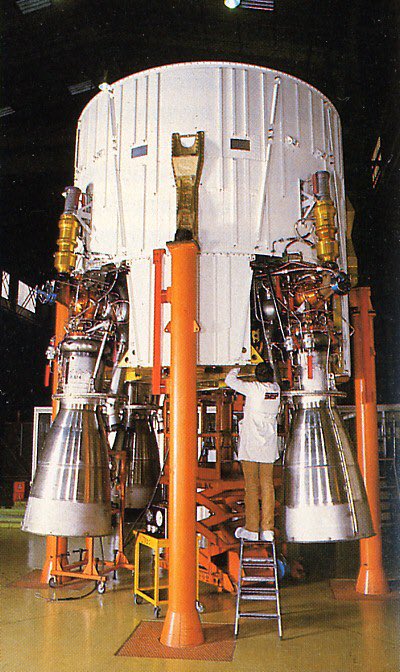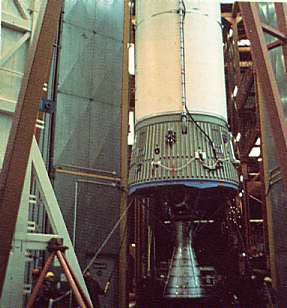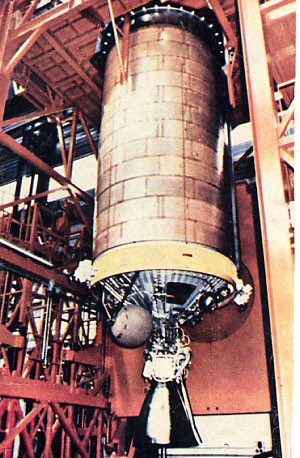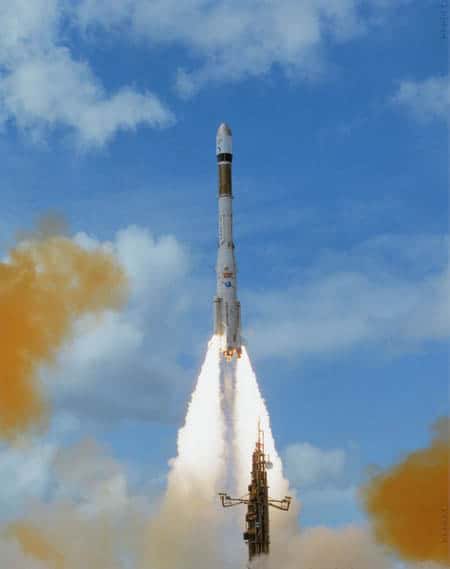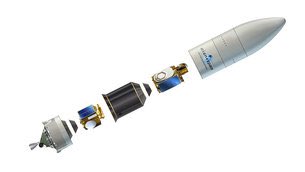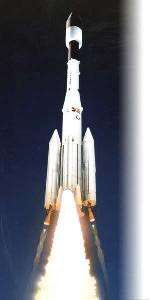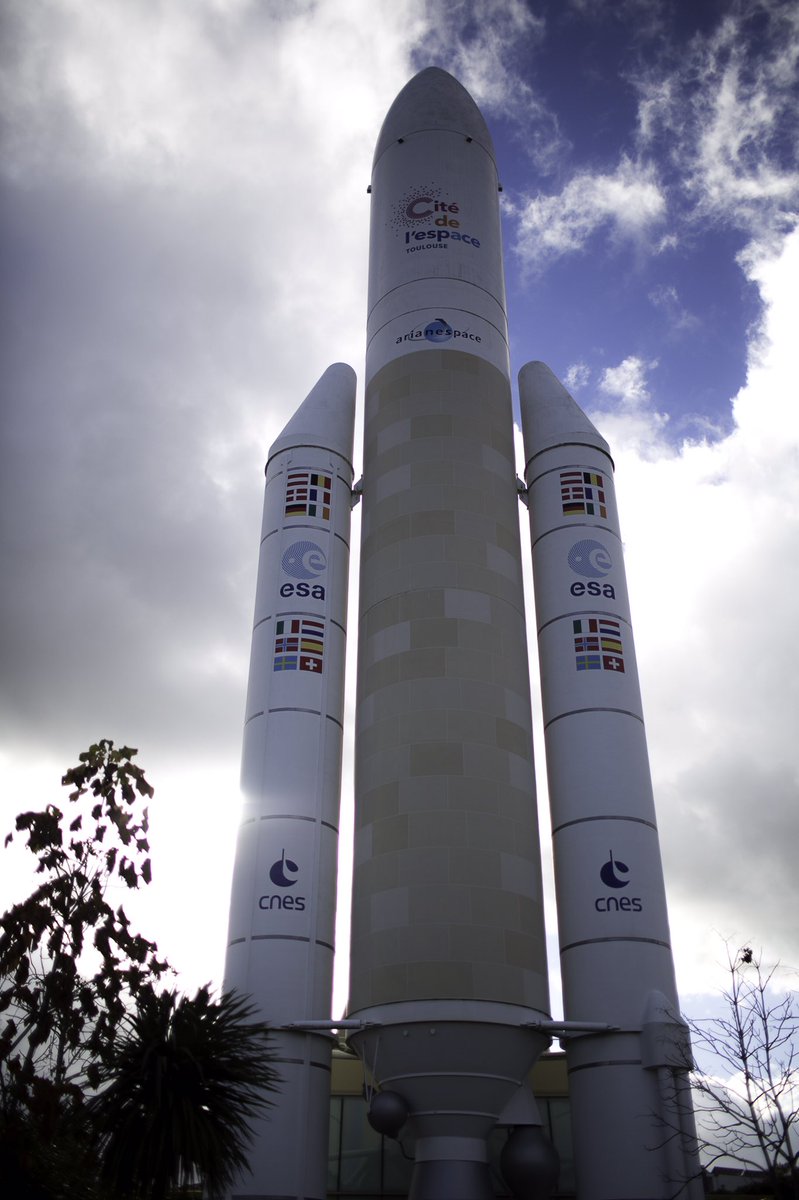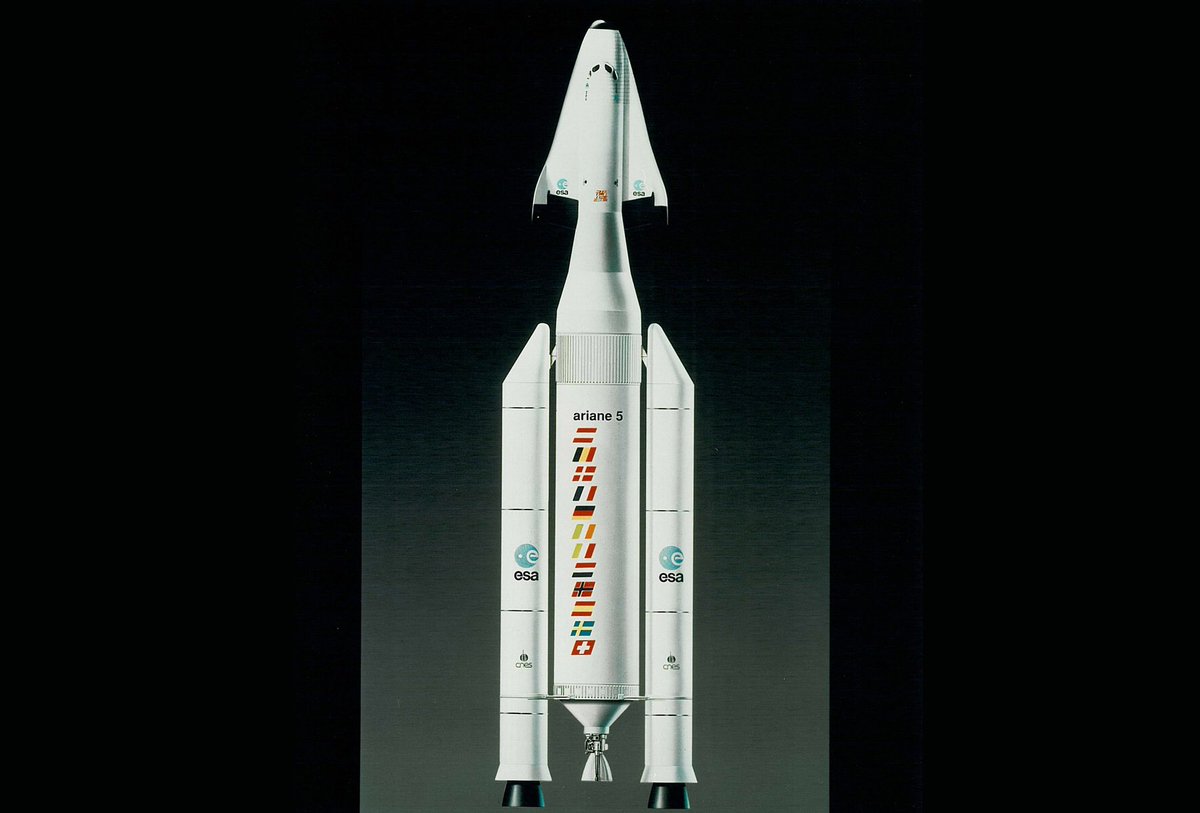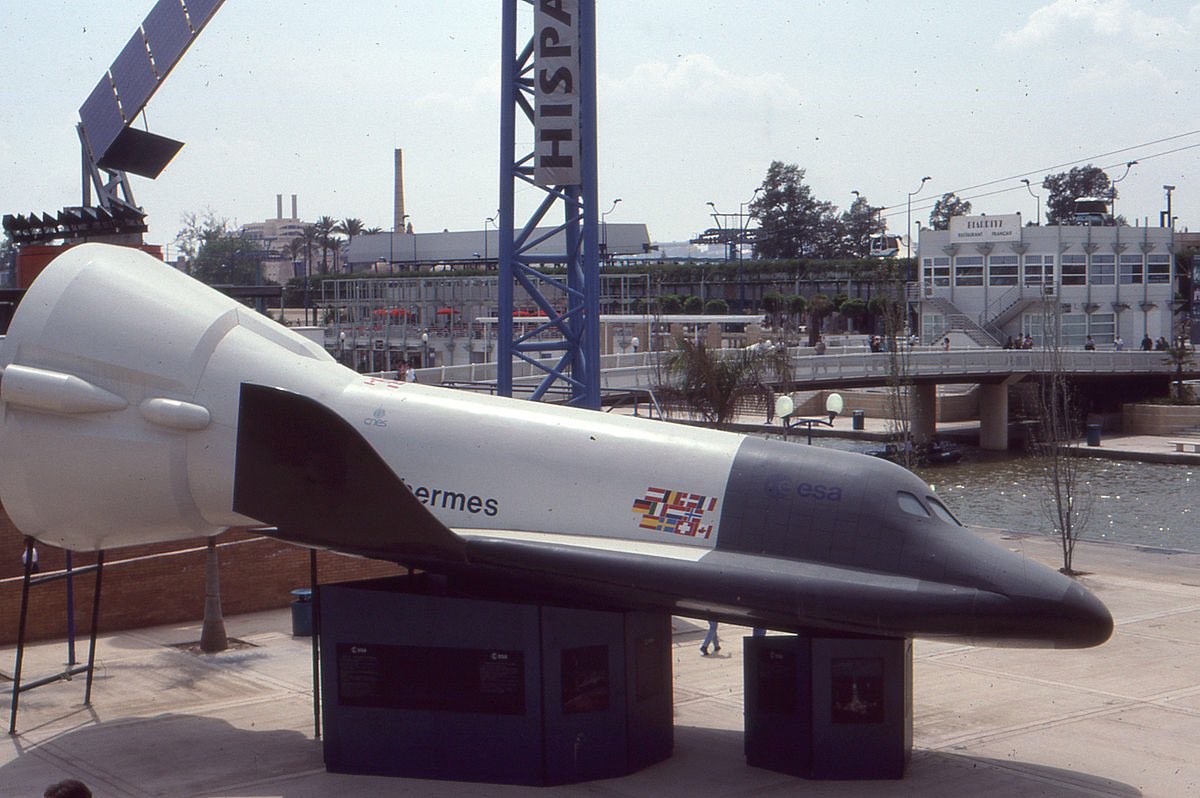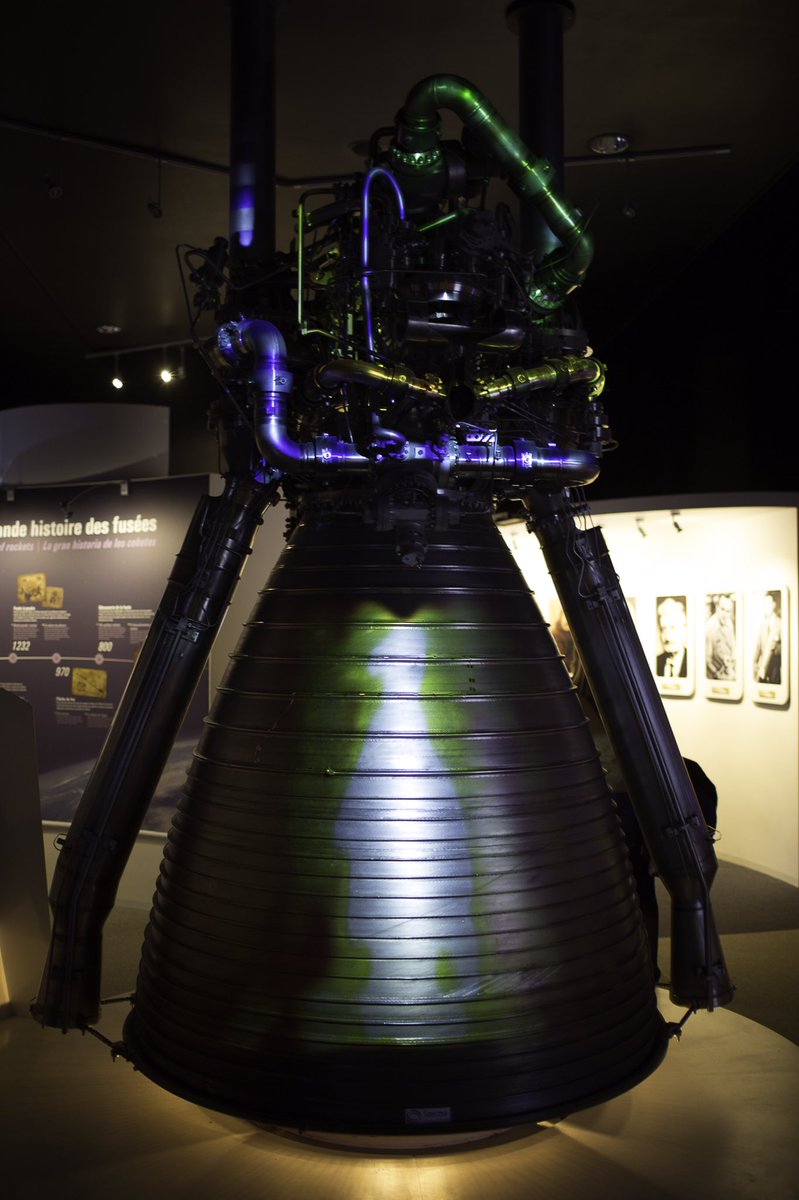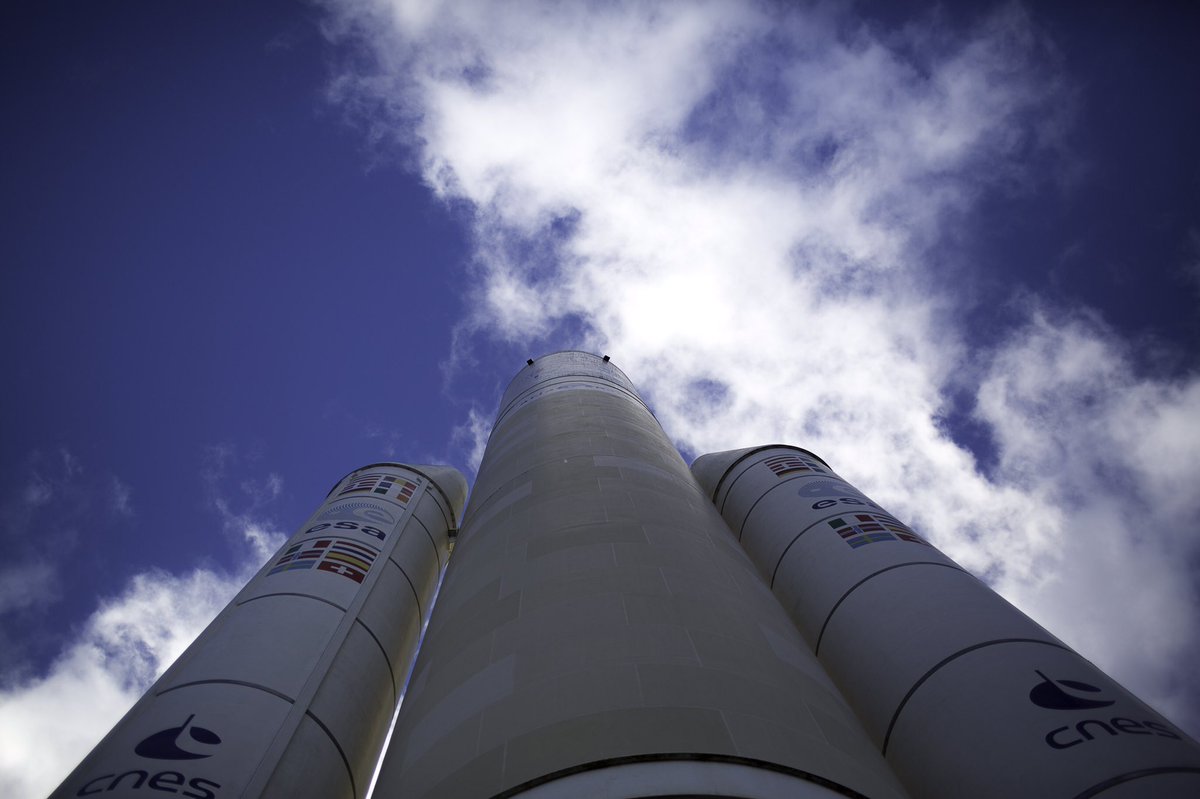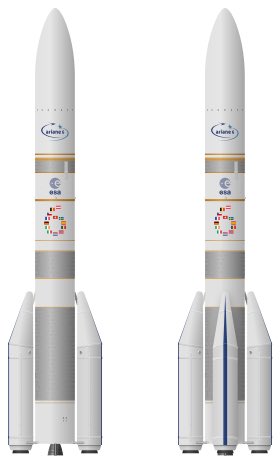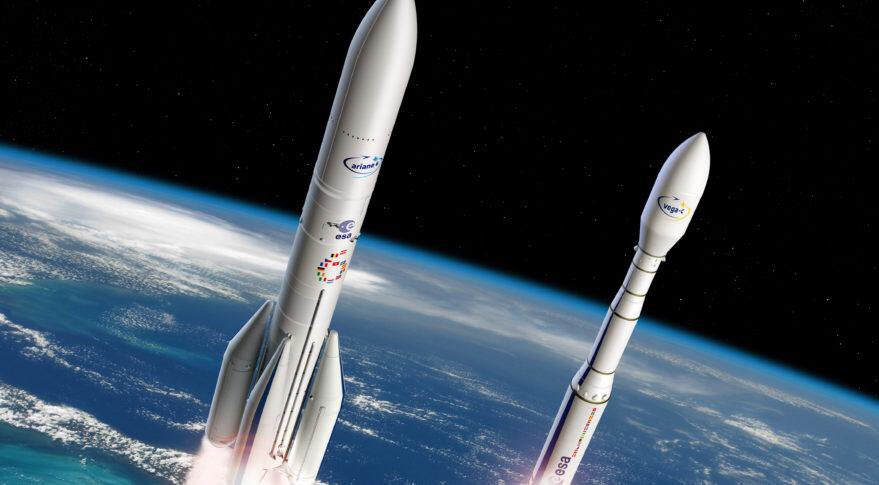Today, a little thread about the Ariane rocket family : from Ariane 1 to Ariane 6 (hopefully) !
I hope you’ll learn things and ger excited for the next europeans rocket launchs


I hope you’ll learn things and ger excited for the next europeans rocket launchs



Ariane 1 was the first launcher developed by the europe in order to launch their satellites in total autonomy. Her first launch happened on Dec 24 1979 (Christmas gift for rocket lovers  )
)
It could launch payloads up to 1850kg to Geostationary Transfer Orbit.
 :ArianeGroup
:ArianeGroup
 )
) It could launch payloads up to 1850kg to Geostationary Transfer Orbit.
 :ArianeGroup
:ArianeGroup
Ariane 1 was a 3 stages rocket :
- The first stage was equipped with 4 Viking 5 engines ( :me at @CiteEspace)
:me at @CiteEspace)
- The second stage was equipped with one Viking 4 engine
- The last and third stage was equipped with one HM-7 cryogenic engine
- The first stage was equipped with 4 Viking 5 engines (
 :me at @CiteEspace)
:me at @CiteEspace)- The second stage was equipped with one Viking 4 engine
- The last and third stage was equipped with one HM-7 cryogenic engine
The full rocket weights 210 metric tons, with a 47m height and a 3,8m diameter.
The first stage could develop 245metric tons of thrust.
The second stage thrusted for 136s and deployed 72metric tons of thrust with its only engine.
Last stage was europe’s forst cryogenic stage.
The first stage could develop 245metric tons of thrust.
The second stage thrusted for 136s and deployed 72metric tons of thrust with its only engine.
Last stage was europe’s forst cryogenic stage.
1.2metric tons, 9 meters high, 2.6m wide : 545 seconds of 6000kg of thrust were used to deploy either one big satellite or 2 smaller ones.
Ariane 1 flew 11 times and failed 2 times (flight 2 & 5 (the first commercial one...))
It launched the first SPOT sat and the Giotto probe !
Ariane 1 flew 11 times and failed 2 times (flight 2 & 5 (the first commercial one...))
It launched the first SPOT sat and the Giotto probe !
Ariane 2 was an upgraded Ariane 1 : small tweaks to stay competitive enough with the growing market.
Launching 325kg more than the previous version, payload weight could go up to 2,175metric tons !
How ? They improved the pressure in the combustion chambers and the fuel capacity
Launching 325kg more than the previous version, payload weight could go up to 2,175metric tons !
How ? They improved the pressure in the combustion chambers and the fuel capacity
Ariane 2 flew 6 times, flight 1 failed during launch.
They created Ariane3 by strapping booster to Ariane2’s sides... and it flew BEFORE ariane 2!
The two SRB added so much thrust that it could deliver payload up to 2700kg in orbit (850kg more than Ariane1!)
They created Ariane3 by strapping booster to Ariane2’s sides... and it flew BEFORE ariane 2!
The two SRB added so much thrust that it could deliver payload up to 2700kg in orbit (850kg more than Ariane1!)
Ariane 3 flew 11 times, knew one failure, and launched 10times with the SYLDA onboard : The « SYstème de Lancement Double Ariane » is the component that allow launching 2 sats above each other !
( : on an Ariane 5)
: on an Ariane 5)
(
 : on an Ariane 5)
: on an Ariane 5)
The 2 evolution of Ariane1 stopped flying when CNES and ArianeGroup released the Ariane 4, at a time where Europe already was a reliable and powerful satellite launcher
Ariane 4’s development became with an order from ESA on Oct1981. It need to launch payload from 2tons to 5tons with its modulars and flexibles versions : adding or removing different kind of boosters made Ariane4 launch any type of satellites !
The first stage was once again lengthened to now fit 226tons of fuels, the Viking engines were upgraded, the cryogenic engine was also a better one (and will be used on Ariane 5)
Liquid boosters had 670kN of thrust for 142sec, where Solid ones had 650kN for 33sec only.
Liquid boosters had 670kN of thrust for 142sec, where Solid ones had 650kN for 33sec only.
About the boosters : Ariane4 had a lot of configurations, L meaning Liquid and P meaning Powder.
The Liquid Boosters used also Viking engines, leading to an 8 engine launch with the 44L configuration, or a mix between Liquid and Solid boosters !
The 44L was the most powerful one
The Liquid Boosters used also Viking engines, leading to an 8 engine launch with the 44L configuration, or a mix between Liquid and Solid boosters !
The 44L was the most powerful one
Ariane4 flew from June 15 1988 to February 15 2003 (wow !) with 116 flights and 3 failures (1990 and 2 in 1994) leading to a 97% fiability ratio ! It was the real beginning of the Ariane family being the most reliable rockets 
( : ESA/CNES/ArianeGroup)
: ESA/CNES/ArianeGroup)

(
 : ESA/CNES/ArianeGroup)
: ESA/CNES/ArianeGroup)
A20 version launched 7 times without failure, A42P launched 15 times with one failure, A44P knew no failure on 15 flights, A42L neither on 13 flights, A44Lp launched 26times with one failure and A44L failed once on 40 flights !
Launching from Kourou is also a great thing : at a time where most of the launches require GEO/GTO orbits, launching close to the Equator is a real boost for performances and launch windows
The first flight launched MeteoSat-3, telecommunications satellite PAS-1 and Radio Amateur satellite AMSAT-P3C. The first heliosynchronous launch append in year 1990.
1998 saw a record of payload to GTO : V-113 launch 4946kg to orbit (AFRISTAR & GE-5) !
1998 saw a record of payload to GTO : V-113 launch 4946kg to orbit (AFRISTAR & GE-5) !
With more than 180 satellites deployed in 116 flights and 5 years (10 heliosynchronous and 106 GTO), Ariane4 was an incredible launcher, and then was retired to let Ariane5 take the lead of Europe’s high tech launchers !
( : me at @CiteEspace)
: me at @CiteEspace)
(
 : me at @CiteEspace)
: me at @CiteEspace)
Even before the first flight of Ariane4, ESA, CNES and ArianeGroup has already decided to develop Ariane5 !
On January 31 1985, her development began.
At the beginning, it was built to launch heavy payload as the Hermes European Space Shuttle (cancelled in 1992)
On January 31 1985, her development began.
At the beginning, it was built to launch heavy payload as the Hermes European Space Shuttle (cancelled in 1992)
Almost all european countries are involved in Ariane5 development and budget : France (46,2%), Germany (22%), Italy (15%), Belgium (6%), Spain, Sweden, Swiss, etc
Ariane5 was equipped with the best engines and electronics onboard to be the best launcher when released !
Ariane5 was equipped with the best engines and electronics onboard to be the best launcher when released !
The boosters (EAP) burns 2tons/sec of their 480tons of powder to produce 90% of the thrust at launch !
The cryogenic Vulcain engine on the first stage (EPC) is an incredibly powerful engine ! Its turbopump spins at 30k spin/min !
( : at @CiteEspace by me)
: at @CiteEspace by me)
The cryogenic Vulcain engine on the first stage (EPC) is an incredibly powerful engine ! Its turbopump spins at 30k spin/min !
(
 : at @CiteEspace by me)
: at @CiteEspace by me)
Ariane5 has got a few fairings available depending on the mission : 12m*4,5m or 17m*4,5m.
Ariane5 is declined to 4 versions : G (classical, 6T GTO), ECA (Vulcain2, cryo 2nd stage, 10,5T GTO), and G+(7T GTO) and ES(Dedicated to the ATV cargo to the ISS)
Ariane5 is declined to 4 versions : G (classical, 6T GTO), ECA (Vulcain2, cryo 2nd stage, 10,5T GTO), and G+(7T GTO) and ES(Dedicated to the ATV cargo to the ISS)
With more than 10Tons to GTO, an incredible reliability (first flight went BOOM and a few flights ended in partial or total failure, but more than 64 success consecutively and more than 100 flights, big missions and telescopes deployed, Ariane5 is a top level heavy lift vehicle !
Even though @SpaceExplorerW will talk about Ariane5 a lot, let me introduce the next launcher from ESA/CNES/ArianeGroup : Ariane6 !
Not reusable, but ultra performing launcher using Vega-C first stage as SRB, it’ll deploy >11T to GTO on 2020 !
Not reusable, but ultra performing launcher using Vega-C first stage as SRB, it’ll deploy >11T to GTO on 2020 !

With 2 or 4 boosters and Vulcain2 and Vinci engines, it’ll compete against SpaceX and Long March Chinese rockets.
Remember that Europe also uses Vega (soon Vega-c ) and Soyuz rockets from Kourou in French Guyana !
) and Soyuz rockets from Kourou in French Guyana !
Remember that Europe also uses Vega (soon Vega-c
 ) and Soyuz rockets from Kourou in French Guyana !
) and Soyuz rockets from Kourou in French Guyana !
Thanks for reading this quick and incomplete thread about the Ariane family, only a quick view of what happened and of Europe’s main launchers !
More ? Check
@SpaceExplorerW @idariane @Astro_Danyboy @TechSpatiales @AstroVicnet @CNES @CiteEspace @esa @ArianeGroup @florencseroussi
More ? Check
@SpaceExplorerW @idariane @Astro_Danyboy @TechSpatiales @AstroVicnet @CNES @CiteEspace @esa @ArianeGroup @florencseroussi

 Read on Twitter
Read on Twitter